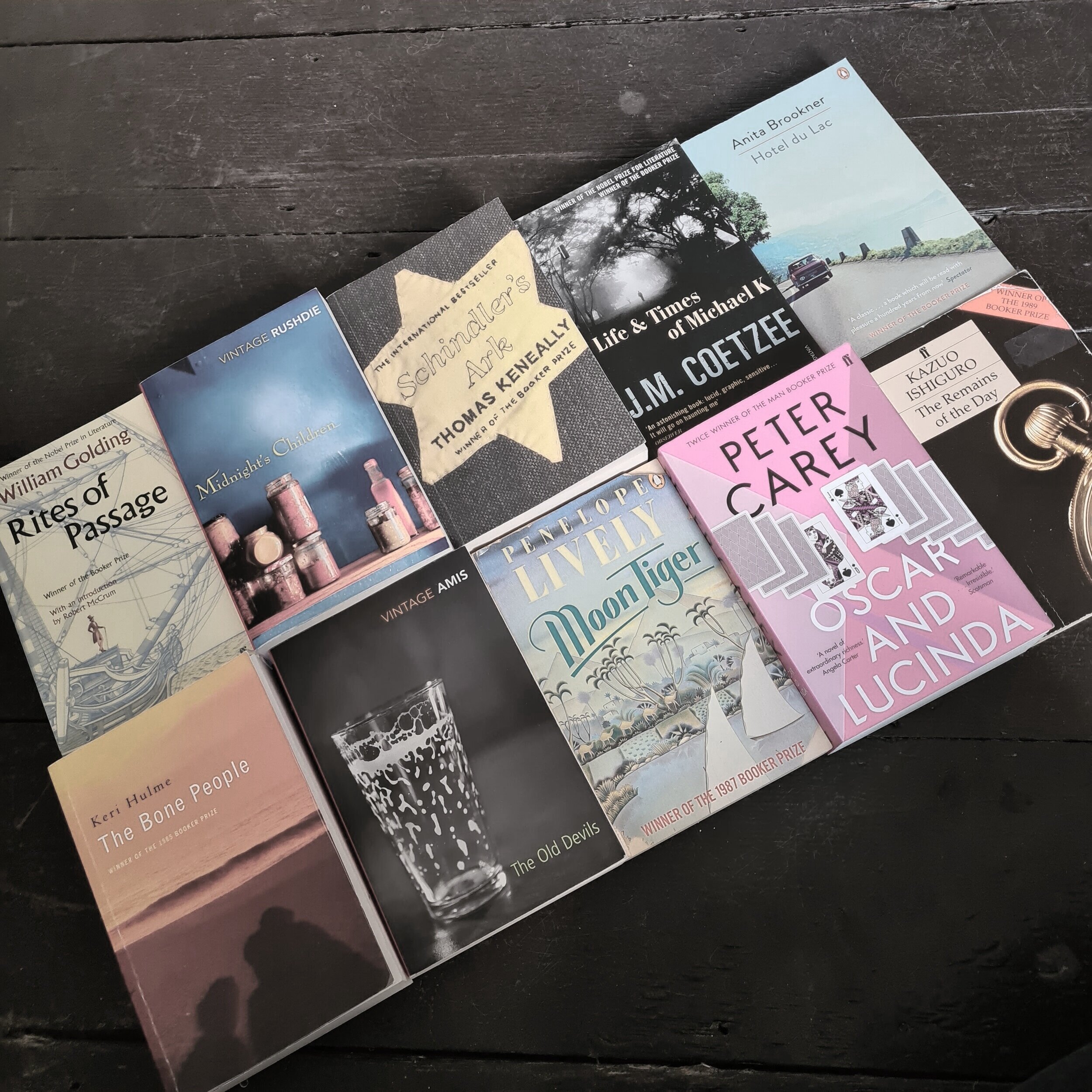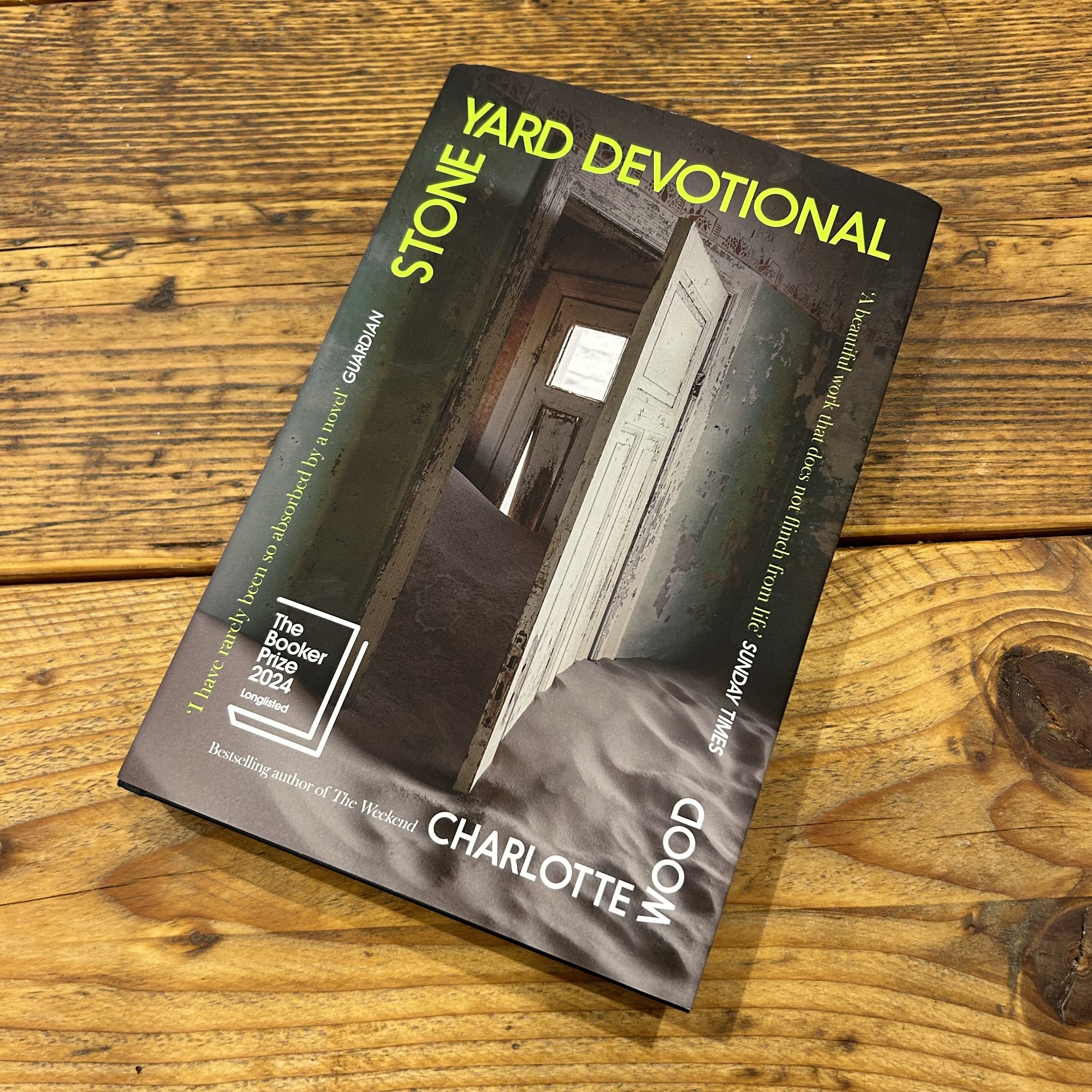
Held (2023)
Held is a very difficult book to summarize in a short paragraph. In some sort of roundabout fashion, it’s a ‘grand historical sweep’ and a family saga, two things I usually very much enjoy. It begins in the trenches of the First World War, before we follow fairly logically into its aftermath, with the return of a soldier to something approaching ‘normal’ life in an early photography studio. In that same section, it takes a leap towards the supernatural, as the faces of his subjects’ loved ones begin appearing in his images. From here, things begin (deliberately) to fall apart, as the ‘novel’ (in as much as it is one) becomes progressively more fragmentary as it travels though the twentieth century and beyond, encountering along the way several generations of descendants of the original characters and the occasional famous figure like Ernest Rutherford or Marie Curie.
Stone Yard Devotional (2023)
Stone Yard Devotional begins with its nameless female narrator attending a retreat at a nunnery close to her rural New South Wales childhood hometown. We learn that after several visits, she has decided to live at the nunnery permanently. Ostensibly a reaction to the grief caused by the early death of her mother, her decision to retreat from society seems to be based more broadly on her ‘giving up’ on the modern world and the passions and causes she followed in her previous life( in which she was clearly passionately committed to charity and a degree of activism) in favour of a simpler, quieter life. We learn that in this process she has ended a long-term relationship.
The Book of Form and Emptiness (2022)
The Book of Form of Emptiness centres on Benny Oh, a young Canadian adolescent who has recently lost his father, the Korean-Japanese jazz musician Kenji, and now lives with his mother Annabelle. It is told by turns from the persepectives of a book (“the book”) and Benny himself, who debates with the seemingly autonomous book as it develops. Following the loss of his father (who was killed by a truck carrying live chickens as he lay passed out following a night smoking marijuana with his jazz band) Benny begins to hear voices in everyday objects. While initially harmless enough, following an incident with a pair of scissors who want him to stab his teacher, Benny is sent to a youth mental health facility. Meanwhile, Annabelle is struggling with the decline of her profession as a media monitoring researcher, and demonstrating (to Benny’s dismay) increasing tendencies towards hoarding.
The Poisonwood Bible (1998)
The Poisonwood Bible follows the Price family, led by the missionary preacher Nathan, as they move from their home in Georgia in the US to the small village of Kilanga in what was then the Belgian Congo. While it is Nathan’s vocation that takes the family to Africa, the novel is told from the perspective of the five women of the family: the mother Oreleanna, who narrates from a retrospective position, later in life, and the four daughters of the family.
Hamnet (2020)
Hamnet is a creative imagining of the story of the death of Shakespeare’s only son. Despite its title, it focuses predominantly on the bard’s wife, here called Agnes (pronounced Ann-yis, and as named in her father’s will) though typically better known as Anne Hathaway. It’s a non-linear narrative with its substantial first section moving back and forth in time between the events leading up to Hamnet’s death from the bubonic plague, and the early days of William and Agnes’ relationship, covering the birth of their three children, first Susanna, whose conception leads to their marriage, and later the twins Judith and Hamnet.
Western Lane (2023)
Western Lane follows Gopi, an 11-year old British-Indian Jain girl living in suburban London in the 1980s, who has recently lost her mother. Alongside her two older sisters, she is left in the care of her Pa, who is clearly also struggling with grief despite a seeming lack of emotional empathy and uncommunicative nature. Both Gopi and her Pa channel their grief into an obsession with squash, training at the titular Western Lane centre where Gopi meets Ged, a white boy with whom she becomes quietly infatuated, and his mother, with whom Pa finds a connection.
Pearl (2023)
Pearl tells the story of Marianne, a young mother who is reflecting on the loss of her own mother, who disappeared (presumed dead) when she was eight years old. Left with her father Edward and baby brother Joe, she has spent her life struggling to understand her mother’s motives, grieving both for her mother and for the family home which they had to abandon in the wake of her loss.
Fugitive Pieces (1997)
Fugitive Pieces is a novel in two sections, each focusing on a character's attempts to deal with trauma and loss relating to the Holocaust. Its first and longer section focuses on Jakob Beer, who as a 7-year old is the only person in his town to survive a round-up of Jews by invading Nazis. He is found by a Greek archaeologist, Athos Roussos, who take him into his care, moving him secretly to Zakynthos in Greece.
Lincoln in the Bardo (2017)
Lincoln in the Bardo focuses on the death of Abraham Lincoln's son Willie. It focuses (not sequentially) on the build-up to his death (in which the Lincoln's host a party while Willie lies bed-ridden), his death itself, and the aftermath, in which the grieving president visits his son's crypt and holds his body, all apparently based in historical fact. So far, so simple? Well… the above summary does absolutely no justice to what this novel actually is, which is a joyously unusual thing that mixes historical accounts (real and invented) of those events with a wild supernatural narrative set in the "bardo", a Buddhist term for the "intermediate state" between death and resurrection.
The Sea (2005)
The Sea is narrated by Max Morden, a retired art historian reflecting on key moments of love and loss in his life. With little delineation, Max shifts his narration between three timeframes. The oldest covers a period in his childhood, during a summer holiday in a seaside town called Ballyless, where he becomes infatuated with a middle-class family, the Graces. His obsession focuses first on the mother, Connie, and then (in a different way) the daughter Chloe, who is also inextricably linked to her mute twin, Myles. We're also introduced to Carlos, the husband, and Rose, the twins' nursemaid. This part is in many ways the centrepiece and the events within it echo and reverberate across the other sections.










